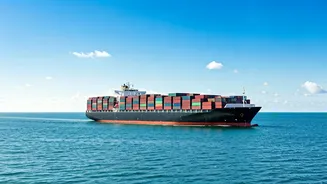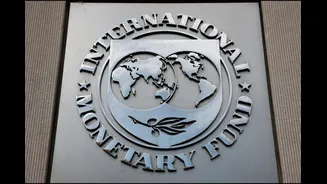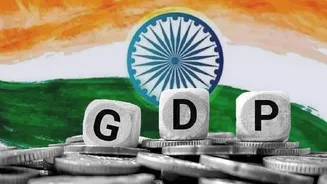Maritime Sector's Dominance
The maritime sector is the backbone of India's international trade, representing an astonishing 95% of its trade volume. This extensive reliance highlights
the critical significance of sea routes for India's economic operations. Seaborne trade efficiently manages the flow of goods, encompassing a broad array of commodities essential for domestic consumption and export. Moreover, it includes everything from essential energy resources to manufactured goods, demonstrating the versatility and importance of marine transportation. The continuous operation of maritime trade guarantees a steady flow of commodities to global marketplaces, encouraging business development, generating income, and improving living standards for the Indian population. The sector's efficiency in managing such a large volume of trade is essential for India's growing economy, encouraging global integration and competitiveness in a world of ever-expanding markets.
Economic Impact Examined
The economic impact of the maritime sector goes far beyond the raw numbers. It creates jobs, nurtures industries, and draws in investment, all of which contribute significantly to India's GDP growth. Ports and related infrastructure development stimulate significant investment in the construction and logistics sectors, creating numerous job opportunities. Furthermore, the maritime sector encourages related industries, like shipping, shipbuilding, and repair services, which in turn foster innovation and technological advancements. The industry's ability to facilitate international trade at competitive prices also greatly benefits Indian businesses by providing them access to foreign markets and boosting their competitiveness. The continuous operation of maritime trade stimulates economic activity, producing a domino effect that influences several areas of the Indian economy and promotes overall prosperity.
Infrastructure and Expansion
To support the vast volume of trade, India is continuously investing in its maritime infrastructure. The government is focused on growing and modernizing its ports, enhancing cargo handling capacity, and improving connectivity to the inland transportation networks. These upgrades are essential to manage increasing trade volumes and decrease transit times, thus boosting the efficiency of the overall trade process. Strategic investments are made to improve port infrastructure, including the development of new terminals, the deepening of channels, and the integration of automated systems. This enhances the operational capabilities and reduces congestion, leading to a smoother flow of goods. Furthermore, investments in inland waterways and road networks contribute to better connectivity to ports, allowing for the faster and more cost-effective movement of goods across India. These infrastructural improvements are expected to significantly contribute to future economic growth by making Indian businesses more competitive on the global stage.
Future Prospects Assessed
Looking ahead, the future of India's maritime sector seems promising, with expectations for continuing growth. The strategic position of India on major shipping lanes offers a significant advantage, and the country is effectively positioned to take advantage of the growing global trade. The development of port facilities and logistics infrastructure is essential for handling increased trade volumes and improving the efficiency of the sector. Furthermore, developments in technology, like automation and digitalization, are expected to play a crucial role in optimizing port operations and reducing costs. Sustainability and environmental concerns are also becoming increasingly important. Investments in eco-friendly technology and processes will be essential to ensure the industry's long-term viability and to comply with international regulations. These factors indicate a positive future for India's maritime sector, which is essential to the nation's economic success and its role in global commerce.














